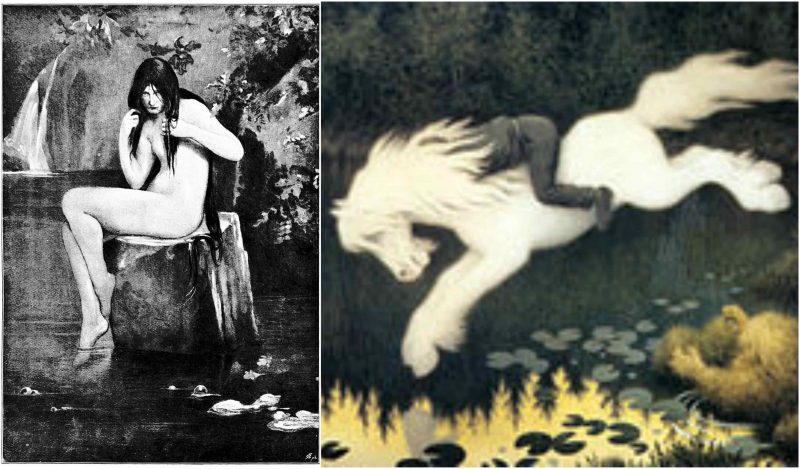One prominent mythological character in the Scottish tradition is the Kelpie: shapeshifting water spirits that inhabit the lochs and pools of Scotland.
The spirit can appear as a human but it usually takes the shape of a horse and haunts rivers and streams. Although renowned for their magical powers, Kelpies are generally malevolent powers.
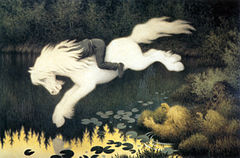
The word “kelpie” is probably derived from the Gaelic “calpa” or “cailpeach”, meaning “heifer” or “colt”. The creature is first mentioned in an ode by William Collins dating from 1759. The spirit can take the form of a beautiful woman who would seduce young men and later lead them to death, or in the shape of a pony that would attract children to back ride it and later eat them. They can also cause a flood for the villages near rivers, or to drawn a traveler.
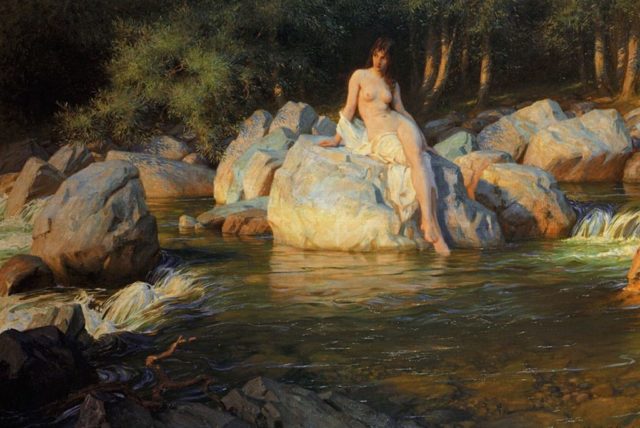
The kelpie is the most common water spirit in the Scotish folklore, but later, folklorists have argued about its aquatic nature.
Douglas Harper, historian and founder of the Online Etymology Dictionary, defines “kelpie” as “the Lowland name of a demon in the shape of a horse”. The legends say that when a kelpie enters the water, its tail makes the sound of a thunder.
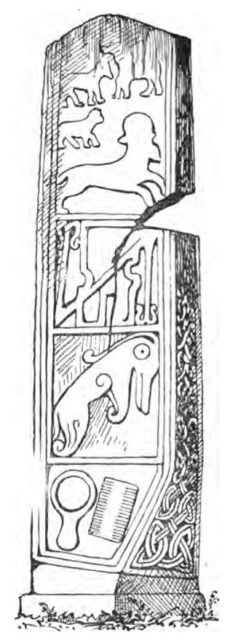
However, sometimes they can warn the people by making noises such as wailing or howling for an upcoming storm. And also, for anyone brave enough, it is good to know that of they can get hold of the kelpie’s bridle, they can command it. And not only that one kelpie, but any other. An “enslaved” kelpie is highly prized and it is believed to have the strength of ten horses.
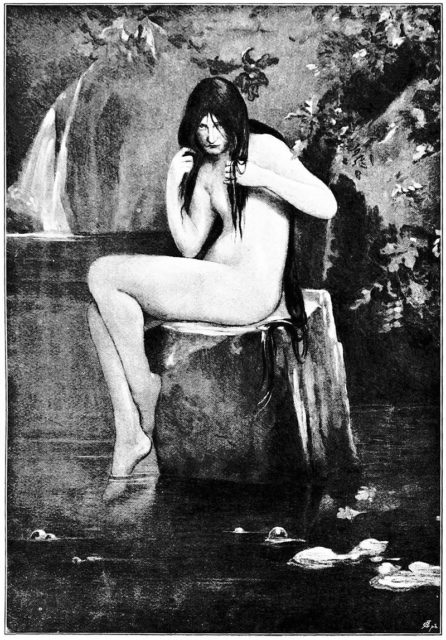
The kelpie is mentioned in Robert Burns’ poem, ‘Address to the Deil’:
“…When thowes dissolve the snawy hoord
An’ float the jinglin’ icy boord
Then, water-kelpies haunt the foord
By your direction
And ‘nighted trav’llers are allur’d
To their destruction…”
There are many Scottish folk tales about kelpies. One such is about the kelpie who tricked nine children to get on his back and chased the tenth.
The child manages to escape while all the rest were taken into the river by the kelpie and never seen again.
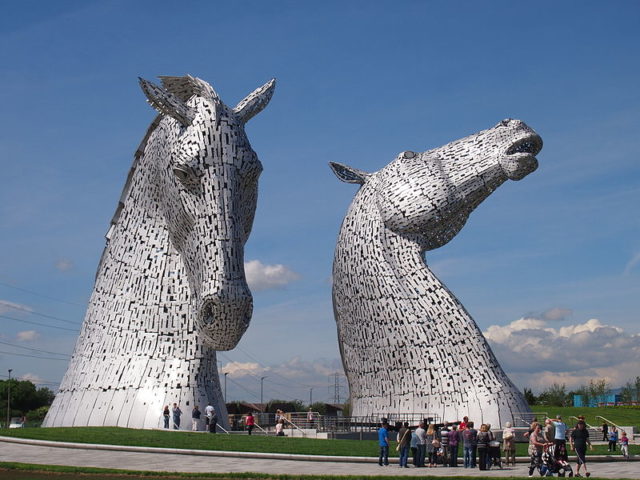
Pictish stones dating from the 6th to 9th centuries featuring what has been dubbed the Pictish Beast may be the earliest representations of a kelpie or kelpie-like creature.
Other depictions show kelpies as poolside maidens, as in Draper’s 1913 oil on canvas. The most famous representation of a kelpie is “The Kelpies”, two 30-metre high steel sculptures in Falkirk, Scotland – the largest equine sculpture in the world, designed by sculptor Andy Scott.
